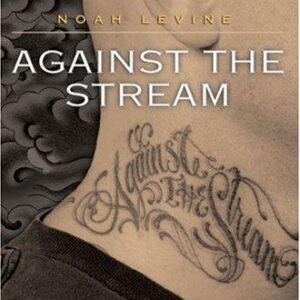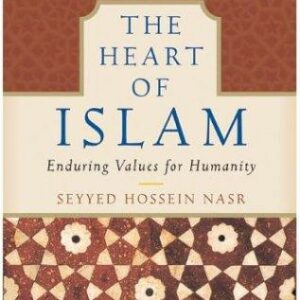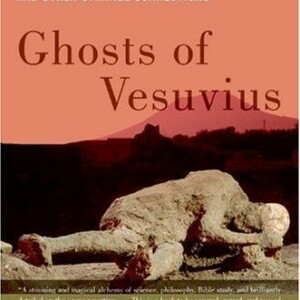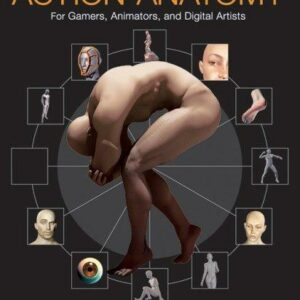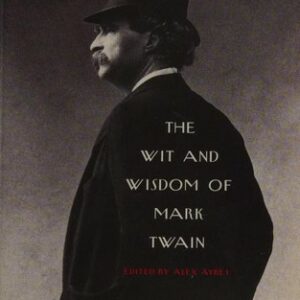The Forest Lover
$17.00
| Title | Range | Discount |
|---|---|---|
| Trade Discount | 5 + | 25% |
- Description
- Additional information
Description
In her acclaimed novels, Susan Vreeland has given us portraits of painting and life that are as dazzling as their artistic subjects. Now, in The Forest Lover, she traces the courageous life and career of Emily Carr, who—more than Georgia O’Keeffe or Frida Kahlo—blazed a path for modern women artists. Overcoming the confines of Victorian culture, Carr became a major force in modern art by capturing an untamed British Columbia and its indigenous peoples just before industrialization changed them forever. From illegal potlatches in tribal communities to artists’ studios in pre-World War I Paris, Vreeland tells her story with gusto and suspense, giving us a glorious novel that will appeal to lovers of art, native cultures, and lush historical fiction.Vreeland, as the Squamish would say, has made strong talk. (New York Newsday)Coming out of the Louvre for the first time in 1971, dizzy with new love, I stood on Pont Neuf and made a pledge to myself that the art of this newly discovered world in the Old World would be my life companion. Never had history been more vibrant, its voices more resonating, its images more gripping. On this first trip to Europe, I felt myself a pilgrim: To me, even secular places such as museums and ruins were imbued with the sacred. Painting, sculpture, architecture, music, religious and social history–I was swept away with all of it, wanting to read more, to learn languages, to fill my mind with rich, glorious, long-established culture wrought by human desire, daring, and faith. I wanted to keep a Gothic cathedral alive in my heart. My imagination exploded with the gaiety of the Montmartre dancers at Moulin de la Galette, the laborer whose last breath in his flattened chest was taken under the weight of a stone fallen from the Duomo under construction in Florence, the apprentice who cut himself preparing glass for the jeweled windows of Sainte Chapelle, the sweating quarry worker aching behind his crowbar at Carrara to release a marble that would become the Pietà. In a fashion I couldn’t imagine then, I have been true to this pledge. I have brought to life the daughter of the Dutch painter Vermeer who secretly yearned to paint the Delft she loved. I’ve given voice to the Italian Baroque painter Artemisia Gentileschi, raped at seventeen by her painting teacher, the first woman to paint large scale figures from history and scripture previously reserved for men. On my own continent, I’ve entered deep British Columbian forests with Emily Carr, whose love for native people took her to places proper white women didn’t go. My imagination has followed Modigliani’s daughter around Paris searching for shreds of information about the father she never knew. I’ve imagined myself a poor wetnurse, bereaved of her own baby so that a rich woman, Berthe Morisot, might paint. I’ve taken my seventeenth century Tuscan shoemaker to Rome to have his longed-for religious experience under the Sistine ceiling. I’ve followed Renoir’s models to cabarets and boat races, to war and elopement, to the Folies-Bergère and luncheons by the Seine.
Now some facts as to how I arrived there: After graduating from San Diego State University, I taught high school English in San Diego beginning in 1969 and retired in 2000 after a 30-year career. Concurrently, I began writing features for newspapers and magazines in 1980, taking up subjects in art and travel, and publishing 250 articles. I ventured into fiction in 1988 with What Love Sees, a biographical novel of a woman’s unwavering determination to lead a full life despite blindness. The book was made into a CBS television movie starring Richard Thomas and Annabeth Gish. My short fiction has appeared in The Missouri Review, Ploughshares, New England Review, Confrontation, Alaska Quarterly Review, Manoa, Connecticut Review, Calyx, Crescent Review, So To Speak and elsewhere.
My art-related fiction, products of my pledge on Pont Neuf:Girl in Hyacinth Blue, 1999, and a Hallmark Hall of Fame production in 2003, tracing an alleged Vermeer painting through the centuries revealing its influence on those who possessed it.
The Passion of Artemisia, 2002, disclosing the inner life of Artemisia Gentileschi, Italian Baroque painter who empowered her female heroines with her own courage. The Forest Lover, 2004, following the rebel Canadian painter, Emily Carr, seeking the spiritual content of her beloved British Columbia by painting its wild landscape and its native totemic carvings.
Life Studies, 2005, stories revealing Impressionist and Post-Impressionist painters from points of view of people who knew them, and showing that ordinary people can have profound encounters with art.
Luncheon of the Boating Party, 2007, illuminating the vibrant, explosive Parisian world of la vie moderne surrounding Renoir as he creates his masterwork depicting the French art of living.
Selected awards:
New York Times Best Sellers: Girl in Hyacinth Blue, The Passion of Artemisia, Luncheon of the Boating Party.
Book Sense Pick, Luncheon of the Boating Party, 2007.
Book Sense Year’s Favorites, for The Passion of Artemisia, 2002.
Book Sense Book of the Year Finalist, Girl in Hyacinth Blue, 1999.
International Dublin Literary Award, Nominee, for Girl in Hyacinth Blue, 2001.
Independent Publisher Magazine, Storyteller of the Year, for Girl in Hyacinth Blue, 1999.
Foreword Magazine’s Best Novel of the Year, for Girl in Hyacinth Blue,1999.
San Diego Book Awards’ Theodor Geisel Award and Best Novel of the Year, 1999, for Girl; 2002 for Artemisia, and 2005 for Life Studies.
My work has been translated into twenty-five languages.
So, what have I learned from all of this? That entering the mind and heart of painters has taught me to see, and to be more appreciative of the beauties of the visible world. That I can agree with Renoir when he said, “I believe that I am nearer to God by being humble before his splendor (Nature).” That people are hungry for real lives behind the paintings. That readers’ lives have been enriched, their sensibilities sharpened, even their goals for their own creative endeavors given higher priorities in their lives.
And especially this: Thanks to art, instead of seeing only one world and time period, our own, we see it multiplied and can peer into other times, other worlds which offer windows to other lives. Each time we enter imaginatively into the life of another, it’s a small step upwards in the elevation of the human race. Consider this: Where there is no imagination of others’ lives, there is no human connection. Where there is no human connection, there is no chance for compassion to govern. Without compassion, then loving kindness, human understanding, peace all shrivel. Individuals become isolated, and the isolated can turn resentful, narrow, cruel; they can become blinded, and that’s where prejudice, holocausts, terrorism and tragedy hover. Art–and literature–are antidotes to that.
INTRODUCTION
Susan Vreeland has become known to readers everywhere as an exquisite and passionate chronicler of historical paintings and their painters. In Girl in Hyacinth Blue, she takes us on a unique and intimate journey following a single Vermeer painting as it moves through many generations, deeply affecting the lives of ordinary people. Then in The Passion of Artemisia, Vreeland brings us from painting to painter, letting us see into the heart of an artist, Artemisia Gentileschi (1593-1652), and what it takes to live an impassioned life. Now, with The Forest Lover, Vreeland explores not only the themes of art, passion, sacrifice, and love but also the importance of art in an individual life and its greater meaning in the world, as she tells the story of Canadian painter Emily Carr (1871-1945).
The Forest Lover begins in 1906, when Emily Carr arrives on the west coast of Vancouver Island. After years of art school in England and San Francisco, Emily has returned to Canada, the place of her birth. In this wilderness, surrounded by sea spray and untamed forests, Emily finally feels free—free from the Victorian social restraints of the day, from the stifling and hypocritical atmosphere of her hometown of Victoria, British Columbia, and from the hold of her family. “Don’t you dare go,” her sister Dede had warned her when Emily announced her intention of visiting a native village.
But it is not just freedom she seeks here. On these Indian reserves Emily, always the outsider, feels most at home. And as she begins to paint the land and scenes of Indian culture, she finds herself connecting ever more deeply with its people. She befriends Sophie, a Squamish basket maker who has lost several children and who sells her wares to buy Christian headstones for their graves. Although this surprises Emily, she finds Sophie’s unwavering faith in the face of adversity inspiring, and she works even harder. Emily’s spirituality grows along with her skill as a painter, as she comes to believe that God, the people, and the land are all one. “God breathes in the forest,” Emily says later in the novel.
In this belief, Emily finds her power both as an artist and as a woman. Her mission becomes painting the awe-inspiring totem poles, symbols of Indian life, which are slowly being decimated, ripped from their original foundations one by one. “The poles are reminders of past glories, of healthy communities before Indian mothers wept or turned hard when baby after baby died,” Emily explains. “It’s something I can do. To counter that sadness.”
As her painting progresses, so does her hunger to expand her palette, to go beyond the traditional watercolors and gentle brushstrokes, and from the totem poles to something more personal. So Emily goes to Paris, to learn and to watch. There, despite the chauvinism and elitism she encounters, she is awestruck by the breaking of boundaries by the “new” painters, such as Matisse and Picasso. Emboldened by a summer spent painting in Brittany with the New Zealand modernist Frances Hodgkins, with whom she shared her longings and secrets, she returns to British Columbia with a new way of looking at her subjects, of using color, and with more determination than ever to break her own new ground.
Despite the very real dangers and difficulties for a woman traveling alone into the wilderness, she pursues her passion to express in her art a pure British Columbia, including its native settlements and totem sculptures. She is even driven to go to hostile villages in the hope of seeing pure indigenous art and celebrating it in her paintings. On a six-week journey that takes her far north, both inland and out to the Queen Charlotte Islands, she executes enough studies and finished paintings to hold a one-person exhibition of two hundred works in Indian motifs, the first show of its kind in Vancouver. Not surprisingly, unused to the Impressionist and Post-Impressionist techniques she learned in France, and antagonistic to Indian themes, the public ridicules her efforts, and she is cast into a slough of depression, loneliness, and near poverty.
Almost five years pass before she meets a man who will become the catalyst for the next deeper stage of her work. He is Harold Cook, the son of white missionaries, who grew up in a remote Gitksan village. Bearing the emotional and physical scars of his childhood, he finds redemption and healing in Emily’s paintings. “You are a hailat,” Harold tells her—a person with spirit power in her hands. For Emily, this is confirmation that her work does indeed have meaning well beyond being pleasing to the eye, that she has seen not only into the “soul of the land” but into the heart of its people, as well.
Despite the protestations of society, family, and art critics, Emily Carr follows her spirit and defies convention, and, after two decades without recognition, wins the hearts of the Canadian people and even the most discerning critics of the day with her bold, original paintings. Today her work is represented in all of Canada’s major art museums and in the Tate Gallery in London, and has recently toured with the paintings of Georgia O’Keeffe and Frida Kahlo.
In The Forest Lover, we see into the heart of a woman before her time who not only created timeless art, but gave voice to a silenced people, defined a nation in search of itself, and proved that art is indeed bigger than life.
ABOUT SUSAN VREELAND
Susan Vreeland is the award-winning author of the national bestsellers The Passion of Artemisia and Girl in Hyacinth Blue. Her short fiction has appeared in The Missouri Review, New England Review,Confrontation, Alaska Quarterly Review, Calyx, Crescent Review, So To Speak and other journals. She received Inkwell Magazine’s Grand Prize for Fiction in 1999.
AN INTERVIEW WITH SUSAN VREELAND
You’ve talked openly about the personal crisis that resulted in your writing Girl in Hyacinth Blue. Would you talk a bit about what brought you to Emily Carr at this point in your life? What was it about her that made you feel such a connection?
I made my personal discovery of Emily Carr while visiting Victoria in 1981 to write a travel article. Immediately her strong colors attracted me, her spunk fascinated me, her down-to-earth voice in her writing appealed to me as authentic and original. As I read more about her and by her over the next decade, I identified with her need to break free of her genteel and conservative upbringing in order to let her creative self emerge, to define herself as an artist, and to gain the confidence to take bold leaps in her life and work. Her interests did not lie within the common realm of her family—needlework, church work, charity work, hopes for a respectable and quiet married life—and perhaps because mine weren’t in accord with those of my 1950s childhood either, I was drawn to and respected her life.
Other similarities connect us. The times when I am completely myself are when I am writing. I think Emily must have felt like that when she was painting. Both are acts of self-discovery.
In the intervening twenty-three years since that first acquaintance, I have imagined spending days with Emily outdoors, breathing the forest spices, examining a leaf, scouring the beach for sea treasures, arriving at the same conclusion that a cedar, a lily of the valley, a loon, a wave are all expressions of God, though I think we’d both have trouble thinking that of a mosquito. Whatever it is that can help to bring God close is something to be revered. The cathedral quiet of a forest did that for Emily as it does for me. The bough of a hemlock convinces me of the grace of God. Such comfort from nature has helped me through difficult times.
This is your third novel about painting and painters. What is it about painting that inspires you to write? Do you think painting and writing are somehow more closely related than the other fine arts are to one another? Are there other subjects that interest you and about which you might write in the future?
There is so much strife and tension in the world that I find the silent world of paintings from the past both hopeful and healing. Whatever the world or the personal situation might have been for a painter, the act of painting, whether intuitive, analytical, or playful, had to have been an optimistic endeavor. I have Artemisia Gentileschi say in The Passion of Artemisia, “The highest of arts is to uplift the spirit, whatever means one uses,” a sentiment I hold to be true.
To me, art begets art. Painting feeds the eye just as poetry feeds the ear, which is to say that both feed the soul. The overflowing of that nourishment is what compels me to write. In any art, the artist’s job is to see things from a fresh perspective. Paintings that succeed in this regard suggest stories to me. Whatever qualities a painting possesses lead me in my own art. The loveliness of a painting makes me long to write beautiful prose. An astonishing composition or a striking color handling challenges me to write something with a strong stance or message. Delicacy in a painting encourages me to write with a light touch.
The painter and writer both start with a blank white space upon which to transcribe a concept in color or words. Both a painting and a novel have shapes and connections to be worked out. A viewer’s eye must be led around the whole surface of a painting just as a reader’s mind must be enticed to discover all the nuances of a story. From my perspective, painting and writing are indeed close to one another because paintings provide source material for stories, scenes, revelations of character, but for other people, this may not be the case. From another person’s perspective, painting and sculpture might seem more closely related, or music and dance. Such questions were asked in Renaissance academic circles (see the discussion between Artemisia and Galileo in Chapter Twelve of The Passion of Artemisia), and still puzzle today’s thinkers.
You have written about two strong female painters from vastly different worlds, neither of which encouraged a woman of independent spirit to pursue an art career—or any career, for that matter. Had they known of one another, what, do you think, would they have appreciated in each other?
Since Emily detested what she saw of portraiture—stiff, formalized, pretentious poses, and dour expressions—I think she would have been awestruck at Artemisia’s figure paintings capturing an active moment in time, with the figures contorted, engaged, the facial expressions full of emotion. Rage, determination, fear, ecstasy, self-defense, religious anguish are all portrayed in her paintings. While Emily might not know the cultural context for such feelings, she would appreciate the chiaroscuro shaping arms and legs, the achievement of the wetness of Mary Magdalene’s eyes, the bold colors and shadings in the women’s dress fabrics, somewhat like the folds of forest foliage, and the dynamic compositions.
Because her artistic time period predated landscape, Artemisia might find Emily’s forest and coastal scenes devoid of purpose while at the same time appreciating the boldness of her colors and the spontaneity of her application of paint. She might even envy Emily’s quickness in executing a painting. It’s interesting to think that while Artemisia was defending herself in a papal court and enduring torture at the hands of an inquisitor, indigenous people in what is now British Columbia were carving their animistic figures into cedar trunks, each unaware of the other. Accustomed to the refined ideal of Renaissance figures, Artemisia would doubtless have found the distortion of the animal figures to be curiously ugly, without seeing in them the whimsy and individuality that Emily did, and therefore might well have considered them without narrative worth.
However, there is one thing that each woman would have appreciated fully in the other, and that is their willingness to take risks for their art, their independence, and their suffering, though of markedly different kinds. I don’t believe either one of them would have conceived of themselves as remarkable women ahead of their time, models for others to follow. Nevertheless, they both have served that function, and continue to do so. Since neither was satisfied in a normal love relationship, I think they would have understood and sympathized with each other’s longings.
For those readers who may be coming to your books (and interviews) for the first time, would you reflect on the difference, from a creative perspective, between writing fiction and writing historical fiction? Has the craft/technique of writing historical fiction become any easier with this, your third historical novel?
Clio, the muse of history, is a fickle mistress, teasing the would-be historical novelist with her rich storehouse of enticing material yet demanding a fair amount of obedience to discovered truth. She tricks us with false paths, guards her secrets, yet showers us with delectable, irrelevant detail. One often finds out something that would have been better not to know, while just as often one fails to find out something one desperately needs—until after one makes do with the imaginary and the book is published.
Writing fiction of purely invented contemporary characters sends a person inward, to discover an infinite number of moments, nuances, and truths, as well as outward, to observe and contemplate one’s contemporary world. Writing a historical novel requires a preliminary step of research prior to and concurrent with that inward and outward work. For me, the research is a period of unfolding riches during which I begin to feel grounded in another time and place. For my previous novels, this involved consulting approximately eighty books each. Because The Forest Lover involves five tribal cultures with which I was unfamiliar, as well as the natural and cultural history of two distinct locales, British Columbia and France, the number of sources I consulted exceeded one hundred.
The process of writing historical fiction is first a matter of discovery, then focus, then selectivity, then invention. A historical novelist would do well to remind herself frequently that rendering the facts of a subject’s life is not her discipline. The novelist working with purely invented characters must invent the facts of the characters’ lives, while the historical novelist must select which facts of a life bear relevance to the chosen themes, the desired story within the history. One must not fall into the traps of feeling the impulse to connect scenes by unloading biographical material, or of losing the humanity or reality of the character in the midst of telling historical events. The work of constructing scenes and determining voice, pacing, characterization, and language remains largely the same for both genres, but the historical novelist must always have an eye and ear for accuracy. If there is anything easier for me now, it is in having a clearer notion at the outset of what I will need to know, and feeling a little more comfortable with invention where recorded information is limited or when narrative needs demand it. Everything else is just as difficult.
You say of Harold Cook that Emily “had found her fullest self through him” (p. 313). You mention in the afterword that little is known about him, yet he plays such an important role in Emily’s life. Can you talk about how you handled this, especially as it relates to the previous question?
All that appears in the biographies of Emily Carr about Harold Cook is that he was the son of white missionaries who lived in Kispiox, whom Emily visited in an asylum, and who was writing an autobiography, no records of which remain. I knew that if I could find a way to make him an occasional visitor to Emily’s apartment house, he could be an important contribution to the novel, and someone with whom she could interact, which would help to diminish the need for static scenes of interior monologue. In my mind I combined him with another historic person, Charles Newcombe’s son William, who knew a great deal about tribal art and culture, loved Emily’s work, and served as her handyman. This last item provided the pretext for his frequent visits.
I felt that the book could be more richly textured if I invented a story and a voice for Harold that reflected the oppressive effect of the missionaries on the indigenous people. I reasoned that if the tragic injury caused by missionary zeal spread beyond the tribes themselves to the whites as well, that would make the impact personal and felt, and the damage to British Columbia more grave. Also, if there was no white character who appreciated her work deeply, then there would have been little indication of how valued her work would eventually become, and the novel would have been unrelentingly pessimistic.
The content and style of Harold’s writing and the use of Walt Whitman’s Leaves of Grass, a favorite book of Emily’s, as the impetus that stirred him were my inventions, serving to illuminate the themes of the animated quality of the natural world, and the spiritual oneness among all people and life forms. My conception of Harold’s life and his love for Kispiox could help me address one of the novel’s most important questions: Could love of place substitute for love of a more conventional kind? Discovering such potential in a person mentioned only as a tiny footnote in a biography is one of the most exquisite joys of writing historical fiction.
The voices of Sophie and the other Indian characters sound and feel so grounded and real. Were there any particular difficulties with finding these voices, given the great differences between your culture and language and theirs?
Yes. Voice for native characters was a delicate issue. In many cases during Emily’s years of visiting native villages, tribal people communicated with whites in Chinook, the universal trading language. In some of her real encounters, Emily relied on gesture, facial expression, and laughter. Since tribal people were just learning English from the missionaries and their new white employers at that time, I reasoned that they probably spoke a broken English of commonly used words. However, overdoing the ungrammatical language could be deemed condescending and injurious to contemporary First Nations people, and annoying for the reader, yet having them speak correct English was a historically inaccurate assumption. I had to tread a narrow middle ground, and decided I would err on the side of a more correct English rather than less, which was probably more true for some locales in Emily’s time.
A preliminary source was Emily’s own narratives of her encounters with the Indians of British Columbia as published in Klee Wyck, in which she fashions a quaint pidgin English, perhaps overwrought. Anthropological books of oral history were also helpful in providing voice as well as traditions and tales. These two sources gave me some typical phrases such as “by and by” and calling children “my baby” even when the son or daughter was an older child. In addition, I had tremendous help from a native historian, artist, and writer, Ron Hamilton of the Nuu’chah’nulth nation on Vancouver Island, for whose wise counsel I am very grateful.
Emily often talks about creating “emotional reaction” in her work and “penetrating the nature of things.” Would you say these are your goals in writing a novel as well? And, if so, how do you achieve this, especially when writing about historical figures?
Yes, they are my goals. That’s another reason I feel such an affinity to Emily. It seems to me that any artist would want to reveal new aspects of the nature of things. Penetrating the nature of British Columbia, as well as the Netherlands and seventeenth-century Italy, were the challenges I accepted, eagerly, since I love all of these places. However, that is not to say that I didn’t find these challenges daunting, being neither Canadian nor Dutch nor Italian.
In order to tell Emily’s story with feeling and accuracy, I had to penetrate several of the British Columbia forests on foot, marvel at their myriad formations, touch a fungus, take notes, smell salt spray and pines, listen to ravens, feel the dampness and the mosquito bites, get seasick, stand before ruined totems, lay my hand on a bed of moss, attend a native ceremonial dance, eat smoked salmon and boiled lady fern and whipped soapberries, take more notes, read and reread Whitman’s Leaves of Grass. Of course, like Emily, I loved everything terrifically.
In bringing to believable life the painters of the past, I have one huge resource—their paintings. Just by virtue of seeing what subjects a painter chooses, I am invited into what he or she believed to be a worthy moment. Invariably, seeing Carr’s paintings face to face in the Vancouver Art Gallery made them even more powerful, and Emily more original in my mind.
In order to convey emotion, whether felt by historical or contemporary characters, I have to imagine my way into the situation and the character’s thinking, keeping in mind the general attitudes of the time as well as the character’s attitudes in particular. I have to feel the emotion myself, sometimes even stand in front of a mirror and act out a response, and then dismiss the emotion entirely and think dispassionately, analytically, about connections, imagery, action, gesture, language. That’s when the real work begins. When the answer comes, it’s a joyful moment of more than ordinary existence. Oh, to have that ecstasy often!
The friendship between Sophie and Emily is so rich and powerful—they are two women from such different backgrounds and yet are so connected as human beings. Can you talk a bit about how you researched and then wrote about this relationship? What interests you so much about cross-cultural friendship?
I discovered Sophie in Carr’s book of Indian narratives, Klee Wyck. She also appears in sparse comments in Emily’s journal, Hundreds and Thousands, and briefly in the biographies. I researched Squamish basket making, the church at the North Vancouver Mission Reserve, funeral practices, and reserve history. What was most meaningful, however, was walking among the headstones of Sophie’s children’s graves at the mission cemetery in a drizzle, reading the dates, and imagining her grief. In actuality, she lost twenty-one children, too many to seem realistic in a novel. “I love Sophie’s smile of welcome,” Emily wrote in Hundreds and Thousands. “It is just as dear, perhaps dearer, now that her countenance is abbreviated by losses” (p. 117). Earlier she wrote, “Sophie [means] so much to me and I so much to Sophie” (p. 35). Sophie’s quirky personality, her stubbornness, her bewilderment at her babies’ deaths were suggested in Klee Wyck, but I fabricated scenes in which these qualities were evident. What I endeavored to avoid in the novel was Emily’s unintentional condescension that shows itself at times in Klee Wyck, for I believe she would never have wanted to hurt Sophie.
And again, I had help from my native source, Ron Hamilton, in imagining their reactions to each other. His uncle, George Clutesi, an artist, knew Emily, and she willed to him all her painting supplies, so there is some connection. Ron showed infinite patience in answering my relentless questions of “What if…?” and “What might Sophie have said then?”
In particular I loved to imagine those moments of encounter when their values clashed, or when one woman said or did something startling, puzzling, or outlandish as viewed by the other. I think it’s my love of the foreign and the exotic that is allowed freedom of expression in such scenes. If only more people would have honest, loving encounters with individuals in other cultures, I believe our world would have not only more richness, but also more harmony.
Do you agree with Emily that Art, Nature, and God are all one and indistinguishable? And, if so, how has this belief affected your own art and your conception of yourself as an artist?
Yes, I do agree that they are all one. Art and nature have their source in God and are expressive of a universal creative principle. Perhaps the creative act in all disciplines is a matter of listening to the thoughts that appear as gifts in our mind, which includes our mind’s eye and ear. How else could Beethoven have continued composing after he lost his physical hearing, or Monet continuing to paint water lilies with deteriorating eyesight? Passion and excitement for what one creates have to be tempered by deep, sincere listening, and conscious observation and receptivity, which are acts of humility. In her journal, Hundreds and Thousands, Emily Carr wrote, “You yourself are nothing, only a channel for the pouring through of that which is something, which is all. Your job is to keep that channel clear and clean and pure so that which passes through may be unobstructed, unsullied, undiluted, and thus show forth its clear purity and intention” (p. 34).
I find that the deeper aspects of awareness come to the surface more readily when I am quiet and receptive rather than forcing an outcome, when I have trust enough and patience enough to follow a line of thought that arrives, plunk, in my lap, to see where it leads. When that happens, the only appropriate response is gratitude. This is not to say that there is no place for multiple revisions or studies in craft or engagement in criticism from others. Certainly these are part of my ongoing endeavors. I do better, though, when I see myself as partnering with a spiritual source of all ideas, whether I’m designing the architecture of a novel or deciding on a single word in a tiny sentence.
A little poem I wrote once might suggest that sort of conscious observation and appreciation that I believe are essential to both writing and worship.
A leaf. Just a leaf.
Feel its texture or smoothness.
Smell it. Turn it over.
Twist it on its stem and watch it dance.
Notice its symmetry or asymmetry,
Its curves and points,
Its delicate stem securing it to something larger,
Firmer, rooted in a mysterious source.
Become lost in the wondrous.
Let everything else go.
Let even yourself go,
Your small and your big concerns.
Surrender to the beauty of a leaf.
Surrender to the beauty of something else,
Once a week. Daily is even better.
Give voice to your appreciation.
In some circles, they call that religion.
At the end of the novel, Emily talks about how she’ll paint the people in her life as different kinds of trees. How would you paint yourself in nature?
The alder, a deciduous tree of the Northwest coastal forests, is the first tree to grow after a cataclysmic event such as a forest fire or clear-cut logging. Alders are generative trees that provide the necessary environment—shade and mulch—in which the taller conifers can eventually sprout and grow. They propagate themselves by catkins, the female one less than an inch long, similar to miniature fir cones. From such a humble beginning, alders can grow to seventy feet. Their dense mass of rootlets makes them able to endure flood and keep the soil from eroding.
Through the cataclysmic event in my life, a life-threatening illness, I sent down deep many filaments of hope and entreaty, and was fed and vivified by that great Source of all Life. I, a tiny cone packed with shy hope and big love, was allowed to live, and generate, and from that cone my second life as a writer has flourished.
Prior to that, in thirty years of teaching high school, 5,500 students have passed a year with me. After that, through my novels and stories, countless more minds have opened themselves to my words. I like to think that I’ve provided nourishment for others in their personal growth as sturdy, unlimited, imaginative human beings. A couplet appearing in Britannia’s Pastorals reads:
The Alder, whose fat shadow nourisheth
Each plant set neere to him, long flourisheth.
If that is true, perhaps my words and my life will also flourish for a long time to come. In the hope of that, I would paint myself as an alder.
DISCUSSION QUESTIONS
: Salmonberry, 1906
Letting her cape snap in the wind, Emily gripped her carpetbag and wicker food hamper, and hiked up the beach, feasting her eyes on Hitats’uu spread wide beneath fine-spun vapor. Cedars elbowing firs and swinging their branches pushed against the village from behind. One wayward fir had fallen and lay uprooted with its foliage battered by waves and tangled in kelp. Wind whipped up a froth of sword fern sprouting in its bark. At last, she was right here, where trees had some get-up-and-go to them, where the ocean was wetter than mere water, where forest and sea crashed against each other with the Nootka pressed between them.
She had been to San Francisco and found it cramped, to London and found it stifling. She had ridden the Canadian Pacific Railway across the Rockies, breathless at their jagged power, and had galloped bareback across a ranch in the Western Cariboo, swinging her hat and whooping to the broad sky. She’d gone home to the starched and doilied parlor of the yellow, two-story bird cage of a house in Victoria, British Columbia, where she’d been born, and found only hypocrisy and criticism there.
But this, oh this, the west coast of Vancouver Island, wave-lashed and smelling of salt spray and seaweed, the teeming, looming forest alive with raven talk and other secrets, the cedar bighouses scoured by storms to a lovely silver sheen, the whole place juicy with life, was more wild, more free, more enticing than she remembered it when she’d come here eight years earlier. Or was it she that was different?
Lulu, grown into a young woman now, clamming on the beach, remembered her as soon as she’d climbed out of the hired canoe that had delivered her here from the steamer dock a mile away. Now, with Lulu carrying Emily’s canvas sketch sack, a pack of barking, leprous-looking dogs came tearing toward them. “Stay down,” Emily ordered, planting her feet wide apart.
Lulu ran them off, her braids flying, her long indigo skirt billowing, clams clacking in the basket on her back. She came back to Emily. “Sorry. They awful mean.”
They approached the largest of the bighouses, ancestral dwelling lodges of many families, this one painted with a huge faded red sun. Lulu held open a hide hanging in the doorway, and motioned her inside. Don’t you dare go. Her sister Dede’s angry command issued in their parlor two days before still grated on her mind. Just who do you think you are … ?
A thrill of defiance rippled through her as she stepped in.
Smells of fish and grease and the rich spice of wood smoke engulfed her. Women in striped cotton dresses sitting on tiers of platforms around the fire murmured and gave her curious looks. Some stopped what they’d been doing. An old woman in a red head scarf watched her with narrowed eyes, probably wondering what a white woman wearing a strange plaid English tam perched on her head was doing in their isolated village.
“Hello,” Emily said.
Only a twitch of her bottom lip showed that she’d heard.
“The Nootka aren’t much for friendliness,” the captain of the steamer had told her a couple of hours earlier.
“But I’ve arranged to stay with the missionaries,” she’d said.
“They packed up and left a month ago. I’d reconsider if I were you.”
She’d felt the captain’s words as a blow beneath her ribs. Dede would have gloated if she knew. As it was, Dede had given her a tongue-lashing about her mania for tramping through the wilderness with Indians, calling it a disgrace to the family. Still, she’d stepped off the steamer onto the dock at Ucluelet, and now, in this bighouse, she shoved back the fear that she’d made a mistake.
Lulu nodded to a man who spilled himself out of a hammock hanging from thick beams still shaped like tree trunks. His hair was cut bluntly at his shiny copper jaw, and he wore loose woolen trousers and leather shoes, but no socks.
“Chief Tlehwituua,” Lulu announced, full of respect, and spoke a few words to him in Nootka, to which he responded.
Emily felt his milky-eyed scrutiny go right through her. Who are you? she was certain he was asking. It was the same question she’d often asked herself. Impulsive rebel or lonely old maid? Aimless hobbyist or committed painter?
“Chief Tlehwituua say he knew another missionary family would come. Tide that go out always come back,” Lulu said. The chief spoke again. “He want to know where is your husband.”
“I’m not a missionary’s wife! Tell him, Lulu. I only came to visit the missionaries before. Tell him you remember me. Emily Carr.” She set down her bags and took off her hat.
“Not a missionary wife!” some other voice said in English.
Murmurs. Smiles. Someone laughed. A man slapped his thigh. The chief held up his hand and the room fell silent. Apparently he didn’t remember her. Maybe it was her close-cropped hair. When she’d been here before she had long hair, wound and pinned up like any proper Victorian lady. Now, to them, it probably looked like a bumpy brown knit cap.
The chief consulted with Lulu. “If not a missionary wife, why did you come? He want to know,” Lulu said.
“I came to paint this time. Ask him if I may. The village, the beautiful canoes.”
She dug out her half-filled watercolor book from her sketch sack to show her paintings of Beacon Hill Park in Victoria, woodland and seacoast in England. She felt apologetic. The English trees were puny compared to the mighty Douglas-firs and cedars here. Namby-pamby. A pathetic offering.
Why paint here, he might ask, and what would she answer? That she hoped that here she might discover what it was about wild places that called to her with such promise.
The chief made a circle with his hand, as if holding a brush, and nodded at her tablet.
“He want that you paint now.”
“Now?”
Was this an invitation or a command? Better to assume it was a command. Could she paint under the heat of watching eyes, paint without sketching first? The years in art school in San Francisco and England hadn’t taught her that. Time to prove to herself what, for the last dozen years, she’d only hoped she was.
She opened her watercolor set, a curiosity to him. He stuck his nose down over each color and sniffed while she looked for a subject. The raised platforms along the walls converged at a corner post carved into a man holding a fish, the most striking thing in the house. That would do just fine. It was a difficult perspective. She faltered. It wasn’t right. She ripped off the page and people murmured. She began again, adding the fishing-man figure, baskets, stacks of blankets, carved cedar chests, coils of bull kelp hanging on the wall, and, draped over poles, strips of dried fish looking like curled brown rags. She tried to work quickly, in case they made her leave. But where would she go? The steamer wouldn’t call again at Ucluelet for a week.
When Emily finished, Lulu asked, “You want to paint me?”
Ugh! Portraits were either stuffy or dead. She wondered if Lulu had ever seen her own face. “Do you really want me to?”
Lulu thrust her head forward. “We don’t say things we don’t mean.”
“Sorry.”
Lulu knelt by the fire, and Emily began. Each time she looked up, Lulu’s dark expressive eyes were watching her. Older children and the woman in the red head scarf cast surreptitious glances but did not venture to come close.
“You see Nuu’chah’nulth women in Victoria?” Lulu asked.
“You mean what white people call Nootka?” Emily felt embarrassed. She couldn’t tell the difference between Nootka and Songhees. “Sometimes. Songhees women too.”
“Where do they live?”
“Songhees live at a reserve. Maybe Nootka camp on beaches.”
“What do they in Victoria?”
“Sell berries and fish and baskets.”
She didn’t want to tell her how the Songhees were being pushed out of the reserve in Victoria’s Inner Harbor that had been promised to them forever.
“What more?”
She thought of Wash Mary starching her pinafores on the back porch when she was a girl. “A Songhees lady used to wash our clothes, but that was twenty-five years ago.”
Lulu’s eyes burned with intensity. “She lived with you?”
“No. She lived in a little house beyond Chinatown.”
Emily rinsed her brushes. “There. Finished.”
Lulu studied the painting as if looking away would make it disappear. “That’s me? You make me nice.”
The red-scarfed woman came forward to have a look. Her expression revealed nothing. She walked away, opened a floor chest, wrapped herself in a dark blue blanket decorated with rows of mother-of-pearl buttons, made her way back to the fire, lowered herself onto a wooden box, pulled two hanks of gray hair bound in red cords forward over her shoulders, tapped her chest, and raised her chin in a pose.
“My grand auntie,” Lulu said.
Emily grinned. What she’d really come for could wait. She wiped sweat from her forehead, and set to work again.
The auntie was of this place. Wind and sun had sculpted her face as they had her cedar house. Her laugh lines and sorrow lines were like gullies in a rugged landscape. Flames lit one high cheekbone, left the other in shadow, giving her a secretive look.
Joy rose in her. They were letting her. The wonder of it.
The auntie grinned and said something in Nootka that made Lulu giggle. “She remember you.”
The auntie passed her index fingers over her own eyebrows and flapped her hands outward at her temples.
“She remember your eye hair, like wings.”
Emily laughed. Her one eyebrow too widely and highly arched gave her the look of someone questioning everything.
“She remember you laughing. You’re bigger now, she say.”
True. She’d gone to England a shapely hourglass and had come home as what polite people would call solid, filled-in at thirty-three. Eighteen months imprisoned in that rod-rigid Suffolk sanatorium where they promised to heal homesickness and anything else that ails a body with imposed bed rest and force-feedings of honey and jam and mashed potato mountains—that’s what did it.
“Bigger? Tell your auntie I can laugh bigger now.”
When she finished Auntie’s portrait, she set all three watercolors on a sleeping platform and stepped back, every muscle tight. “They’re for you.”
People crowded to see, speaking in Nootka. They opened a path for the chief and closed in behind him. After a few moments, he turned to her, nodded, and went outside.
“Does that mean he’ll let me stay and paint?”
Lulu snickered. “He always was let you paint. He just want to see you do it.”
Emily laughed a laugh of relief.
Auntie thrust at her a bowlful of salmonberries and said something Emily couldn’t understand.
“You sleep here,” a woman said. “Auntie wants.”
“That’s my mother, Rena,” Lulu explained.
Sleep with all these people? Married people? Old men? The chief? All in the same room? She didn’t belong here, but she didn’t belong in a starchy missionary house with the Ten Commandments plastered on the wall either. Too much like her sisters’ house embroidered with homilies everywhere she looked— enough to squeeze the spunk right out of her. But at least there she wouldn’t be squeamish about what went on around her.
“Tell her thank you. I’ll sleep in the mission house.”
The auntie scowled when Rena translated.
Damn. She’d made a selfish mistake.
“Sure not a missionary wife?” Rena asked.
Good Lord. A missionary’s wife, like Dede and Lizzie’s praying ladies stirring tea with Lizzie’s sacred disciple spoons, or wearing out the parlor carpet on their knees. She never knew when or where she’d trip over one. The mere thought of the missionary families’ Sunday School sprawling into every room of the house, and Lizzie and Dede’s double fury when she refused to teach a class, prickled her skin. That she hadn’t come to Hitats’uu for a missionary purpose inflamed Dede’s provincial propriety screaming against her “degrading notion to live with heathen aborigines in a siwash village. And for what purpose? Some unfathomable, unnecessary search for the authentic BC. Rubbish. It’s right under our roof.”
Emily heard herself laugh, throaty, deep, and loud. “No. Not a missionary’s wife. That’s one thing I’m sure of.”
“Klee Wyck,” the auntie said. Others repeated it, grinning.
“What does that mean?” Emily asked.
“Laughing One,” Rena said. “You.”
Emily laughed again to please them.
US
Additional information
| Weight | 10.6 oz |
|---|---|
| Dimensions | 1.2000 × 4.5000 × 7.2700 in |
| Imprint | |
| ISBN-13 | |
| Author | |
| Audience | |
| BISAC | |
| Subjects | books for women best sellers, Literature, historical fiction, art history, literary fiction, historical romance, alternate history, fiction books, books fiction, art, historical novels, historical fiction books, realistic fiction books, novels for women best sellers, books historical fiction, historical fiction novels, FIC041000, popular books for women best sellers, romance, feminism, horses, historical, spirituality, writing, modern, music, classic, short stories, drama, fiction, mystery, Animals, coming of age, novels, FIC014000, 20th century |
| Format |


